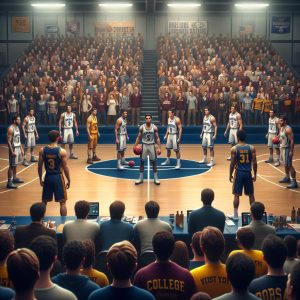Texas A&M Athletic Department Announces Staff Layoffs
In a surprising turn of events on Tuesday, the athletic department of Texas A&M confirmed the layoff of over a dozen staffers, among them several high-ranking administrators. These layoffs not only sent shockwaves across the athletic department but also raised concerns about potential effects on Texas A&M’s athletic performance.
Those Affected by the Layoffs
Justin Moore, executive deputy athletic director and chief operating officer, Chris Park, deputy athletic director for external relations and business development, Tyler Pigg, associate athletic director for branding, creative and communications, and James Duncan, director of football technology, were some of the key staff members shown the exit.
Kristen Brown, deputy athletic director, and Jamie Wood, assistant athletics director for NIL, also confirmed their departure from the department. After dedicating several years to the athletic department, Matt Watson, associate athletic director for equipment and apparel and an alumni from 1995, was also let go.
The Reason behind the Layoff
The new athletic director of the university, Trev Alberts, stated that these layoffs were not linked to budgetary concerns relating to the buyout of former head coach Jimbo Fisher. Instead, they were the result of reorganization efforts due to existing and emerging threats to the department’s business model.
In a statement provided to the press, Alberts said, “We are on the cusp of unprecedented change in the world of intercollegiate athletics. We have to adapt and become more efficient and effective so that we are best positioned for the changes to come.”
A Hard Decision But Necessary for the Future
Describing the decision as ‘difficult’, Alberts empathized with the laid-off staff members and appreciated their contribution to the department. He cited business reasons behind this course of action. “These are good, hard-working members of the Aggie family and their service is greatly appreciated. I can assure you, this was not personal, it was a business decision, and a very difficult one at that”, he said
Outside the university’s internal dynamics, the college athletics industry is currently grappling with critical legal challenges. Several court cases challenge the NCAA’s rules about athletes’ ability to earn money. Therefore, Texas A&M’s restructuring might be a step to better equip itself against such a backdrop.
The Implications of Legal Challenges
Notably, the House v. NCAA case seeks damages of more than $1.4 billion. If successful, these damages would be split among the individual universities, which could potentially translate into a significant financial burden for Texas A&M. Alberts has mentioned that possible annual expenditures of $15 to $20 million might be a reality soon, creating an expense category that athletic departments would need to address.
The future also holds similar challenges around whether athletes are employees of the university, and if as such, they should be granted the right to form unions and collectively bargain.
Albert made no further comments citing them as personnel-related issues as discussions continue about the changing dynamics in college athletics and the future of Texas A&M’s athletic department.
Texas A&M, known for its strong sports program, has always held a place of pride in college sports. The current reorganization might test this reputation, but the university seems determined to pave its way forward to a more robust and resilient future amidst the changing landscapes of intercollegiate athletics.








